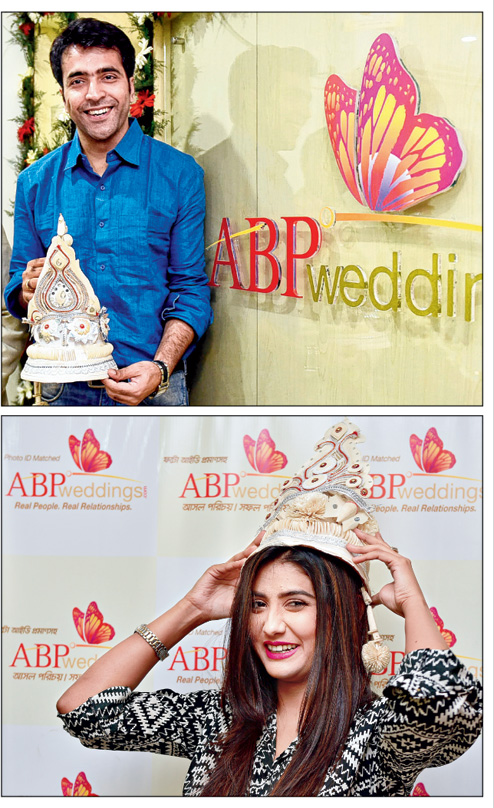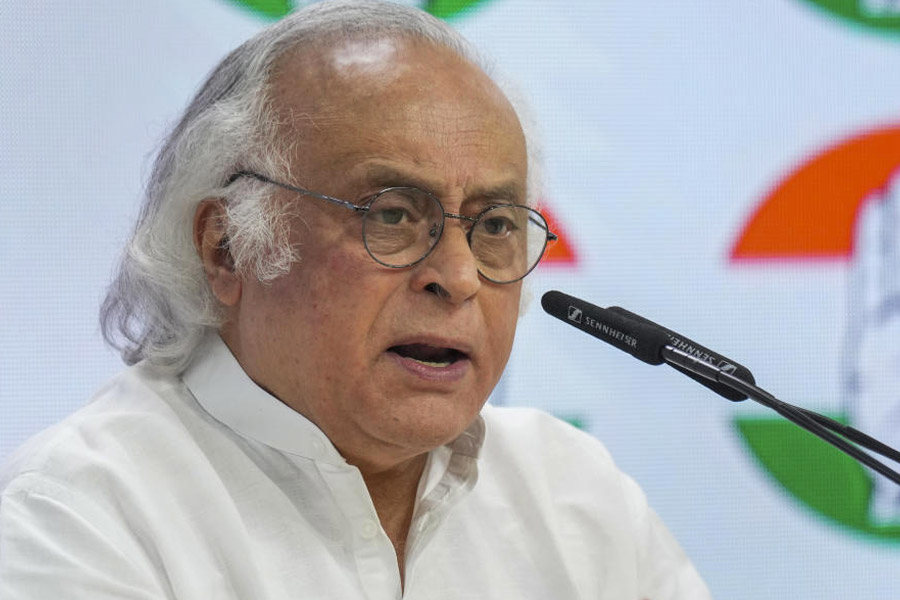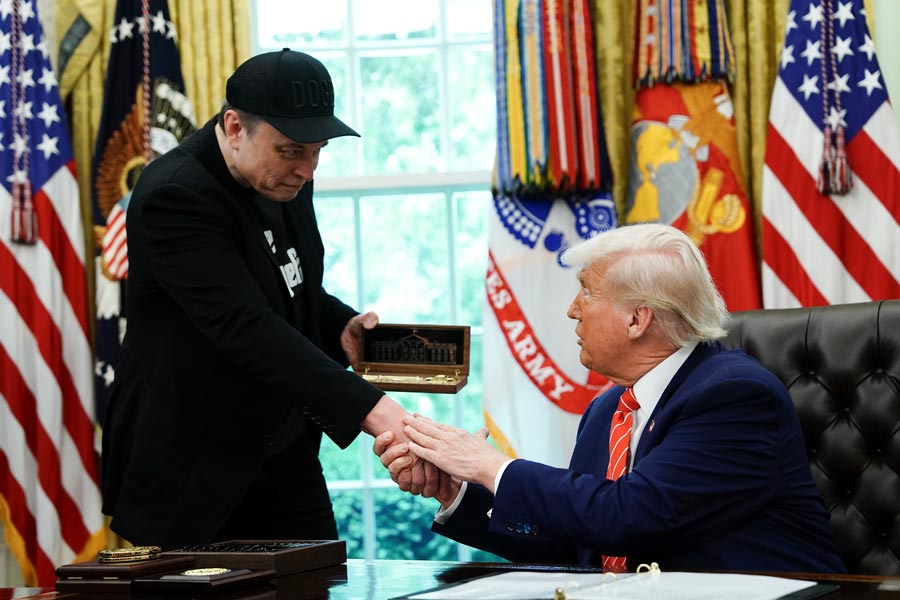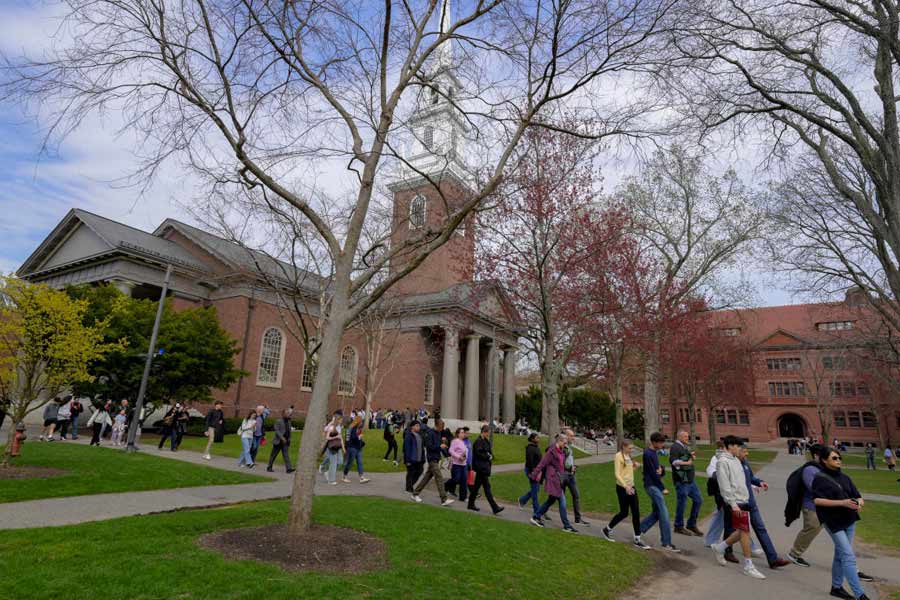In early 17th century, Ngawang Namgyal, the first Zhabdrung Rinpoche, the lama and military leader who was fleeing religious persecution in Tibet, integrated some small warring fiefdoms located between China on one side and India on the other. Thus Bhutan was born. He gave the region a distinct Bhutanese identity, which the people of this landlocked Himalayan kingdom still guard jealously.
As in many parts of India, rice is the staple of the Bhutanese people, but obesity is not a problem there. The men and women look smart and elegant in their national dress - the kilt-like gho for men, and the ankle-length dress, the kira, for women - which they wear all the time.
Thimpu, the capital of Bhutan, is experiencing a building boom. By royal decree, all the picturesque houses have sloping roofs, wood frontages painted with flowers and Buddhist symbols, and small arched windows in keeping with tradition (there are a handful of houses with ugly glass facades, though). But it is fast losing its picture postcard look as too many houses crowd every corner of this small town. Not even the mountains that encircle the town can redeem it.
The complex of the Royal Textile Academy on 4.75 acres established by Gyalyum Sangay Choden Wangchuk, the Queen Mother of Bhutan, to promote 13 traditional arts and crafts, is in the heart of the town. It stands out, and its towering museum building is complemented by a smaller and simpler office building opposite it. The latter houses a well-lighted gallery where exhibitions are held from time to time.
Rinzin O. Dorji, executive director of the academy, says the Queen Mother was always interested in textiles and it opened in 2013. But it took an exhibition of Bhutanese textiles in Massachusetts held way back in 1992 to make the people of this country aware of their value and marketability. The Queen Mother had been invited to the exhibition, and now the lack of a museum in Bhutan was felt deeply.
With the help of DANIDA, the development cooperation of the ministry of foreign affairs of Denmark, a small museum of textiles opened in 2003. But soon afterwards, an article appeared in Wall Street Journal which bemoaned the lack of anything of real value in the museum. The problem was that most people sold off their heirloom. However, a good collection was in the possession of two persons.
Frederik Paulsen, a Swedish billionaire, academic and philanthropist, read the article while boarding a flight, and within a year he acquired the collection of 113 pieces. The Royal Bhutanese Mission in New York was informed, and later, Paulsen visited Bhutan. Thus the new academy came into being. Its mission was to promote and preserve Bhutan's textile heritage. A new research centre will soon be developed when a third building comes up. "We want to be the organisation for any kind of information on folklore culture and intangible heritage," says Rinzin O. Dorji.

The museum boasts a rich collection of textiles, the royal collection, accessories and jewellery, specimens of religious and sacred arts, a wide range of beautiful publications, and a weaving centre, besides a well-stocked souvenir shop with helpful sales ladies. This is a non-profit and it has to generate funds to pay staff salaries.
So it may have come as a surprise to many that Olaf Van Cleef, an artist from Paris known for his flamboyant style, was allowed to exhibit his paintings in the gallery of the Royal Textile Academy, which prides itself on preserving tradition. Van Cleef, himself a scion of the Van Cleef family, once jewellers to the Tsars of Russia, and who has recently retired as counsellor in high jewellery to Cartier, has over the years developed a personal style of his own. It allows him to playfully (often preposterously) juxtapose Calcutta (his favourite city) vignettes with unlikely images plucked from cultures all over the world, and adorn Hindu deities (à la Raja Ravi Varma) with the latest Cartier creations. When he is in a more serious mood, Van Cleef paints complex labyrinths of black lines with just a hint of colour, or fills up a sheet of thick handmade paper with a writhing and jiving "tapeworms".
With his penchant for espièglerie, Van Cleef pastes slivers of gold or silver chocolate paper on his paintings. Of late, he has been encrusting his Hindu deities with Swarovski crystals that sparkle and wink, much to the delight of his moneyed fans who love to adorn their puja rooms with these often outré creations.
For his Thimphu exhibition, which opened on October 13 in the gallery of the textile academy, however, Van Cleef had to change his approach. He was looking for a place to hold an exhibition, and last winter he had been invited to the Raven Camp meant for school children in Thimphu by Jigme Khesar Namgyel Wangchuck, the young king of Bhutan. Here Van Cleef was to give them lessons in painting in his unconventional manner.
Olaf says he chose Bhutan as Christian Louboutin has designed a series of wooden wedges for his friends, the king and queen of Bhutan, and Karl Lagerfeld too has made forays here. But instead of Hindu deities he had to paint Bhutanese ones. Van Cleef made several trips to Thimpu, and did his research on Bhutanese deities at the Guimet Museum in Paris. Over a period of two years he finished 57 paintings, and this time even members of the royal family were impressed.
Van Cleef is still called upon to promote the history of Cartier, and as he says in his Gallic English: "Jewellery excites my eyes with their reflect. I hold jewellery in my hand and I feel electricity. It is like the flying carpet. There is the same reflect of jewellery in my paintings."
So at Thimpu we see before our eyes a serpentine dragon, a seated Zhabdrung Ngawang Namgyel, the unifier of the kingdom, Buddhas in meditation, gambolling snow lions, monks playing trumpets, the goddess Tashi Tsheringma, White Tara, both long shots and close-ups of Padmasambhava/Guru Rinpoche, Yeshe Tsogyal holding a vase and other Bhutanese deities. Van Cleef had to get the iconography just so.
But Van Cleef was not cloning tradition. He gave them a touch of new life as he embellished them with garlands, bouquets and flowers in sophisticated French styles, a Cartier fish clock and necklace, and adorned them heavily with flashing crystals that created the illusion of gem stones and luxurious textiles.
The Queen Mother, who opened the show, was visibly delighted. Her comment: "Traditional Bhutanese art is often inspired by our deeply rooted Buddhist traditions and is considered to be a pious act that gains merit for the artist... Being the 'new generation artist', Olaf's artwork is a unique visual amalgamation of traditional art imbibed with his personal interpretations and experience which has generated interest among the art enthusiasts here in Bhutan."
Among the dignitaries present were Bhutanese princesses, ministers and the Indian ambassador, Gautam Bambawale. Olaf Van Cleef will donate all his sales proceeds from the paintings to the Royal Textile Academy and the Voluntary Artists' Studio in Thimpu for needy practitioners.










